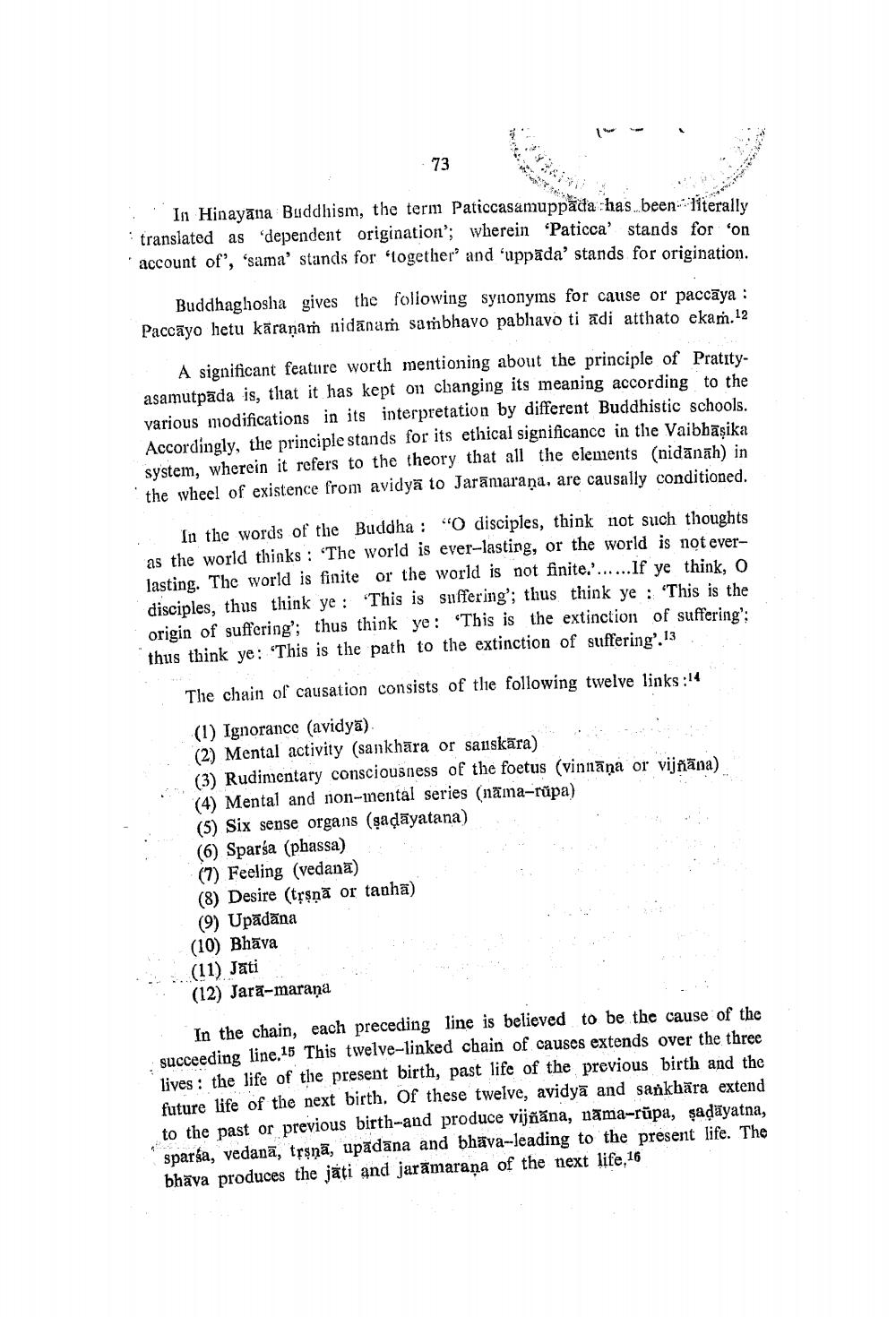________________
I
73
'In Hinayana Buddhism, the term Paticcasamuppada has been literally translated as 'dependent origination'; wherein 'Paticca' stands for 'on account of', 'sama' stands for 'together and 'uppāda' stands for origination.
Buddhaghosha gives the following synonyms for cause or paccāya : Paccāyo hetu kāranam nidanam sambhavo pabliavo ti adi atthato ekam. 12
A significant feature worth mentioning about the principle of Pratityasamutpāda is, that it has kept on changing its meaning according to the various modifications in its interpretation by different Buddhistic schools. Accordingly, the principle stands for its ethical significance in the Vaibbasika system, wherein it refers to the theory that all the elements (nidānah) in the wheel of existence from avidyā to Jaranaraņa, are causally conditioned.
In the words of the Buddha : "O disciples, think not such thoughts as the world thinks : The world is ever-lasting, or the world is not everlasting. The world is finite or the world is not finite.'......If ye think, O disciples, thus think ye : "This is suffering'; thus think ye : This is the origin of suffering'; thus think ye: “This is the extinction of suffering': thus think ye: 'This is the path to the extinction of suffering'. 13
The chain of causation consists of tlie following twelve links:14 (1) Ignorance (avidyā). (2) Mental activity (sankhāra or sauskāra) (3) Rudimentary consciousness of the foetus (vinnāņa or vijñāna) (4) Mental and non-inental series (näma-rūpa) (5) Six sense organs (gadāyatana) (6) Sparsa (phassa) (7) Feeling (vedana) (8) Desire (trọnā or tanha) (9) Upādāna (10) Bhāva (11) Jati (12) Jarā-maraņa
In the chain, each preceding line is believed to be the cause of the succeeding line.15 This twelve-linked chain of causes extends over the three lives: the life of the present birth, past life of the previous birth and the future life of the next birth. Of these twelve, avidyā and sankhära extend to the past or previous birth-and produce vijñāna, nama-rūpa, sadāyatna, sparsa, vedanā, trsnā, upadana and bhāva-leading to the present life. The bhäva produces the jäti and jarămaraņa of the next life,16




